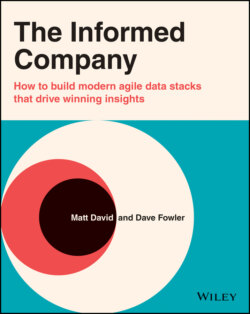Читать книгу The Informed Company - Dave Fowler - Страница 15
Stage 1. Sources
ОглавлениеMany teams only have a few data sources and commonly manipulate and visualize data in Excel or Google sheets. Two common sources that company products run on are Google Analytics and “transactional” database(s), such as PostgreSQL or MySQL. If only a few people at a company need to work with data sources, it's possible to set them up with direct or replica access; it's more agile and straightforward for them to work with the data directly.
We discuss how to configure proper access to data and how to lay the foundation for future organization into a single, unified collection of company data. We also discuss best practices when using tools like in‐app dashboards, spreadsheets, SQL, and BI solutions. Behind these assertions is the principle that teams should be vigorously deliberate when organizing their sources and picking their toolkit. Keeping this in mind not only makes analysts effective at dealing with data early on, but also prepares them to reorganize their input streams into a data lake later on.
This stage is right if:
Only a few people are going to be working with this dataset.
Data needs are minimal at the moment.
Only a few small data sources exist.
The only people who need to make new visuals are fairly technical.
It's time for the next stage if:
Data is accessed from multiple places/applications.
There are needs for unique or combined charts/dashboards for cloud application sources like Salesforce.
A growing number of people need access to data.
There are performance issues.
Data is getting too big for a transactional database to operate efficiently.
Nontechnical users need to create charts without help.
